A Posthuman Vampire: Rational Science and Racial Views in Bram Stoker's Dracula
It’s possible that I shall make an ass of myself. But in that case one can always get out of it with a little dialectic. I have, of course, so worded my proposition as to be right either way (K.Marx, Letter to F.Engels on the Indian Mutiny)
Friday, October 16, 2020
Squirming sea creature likened to horror movie monster The Blob after experts challenged public to identify it
Henry Holloway
Michael Havis
Updated: 8 Oct 2020
A SQUIRMING sea creature has been branded The Blob, just like the classic movie monster, after experts challenged the public to identify the odd life form.
Holly Grand, from the Texas Parks and Wildlife Department, found the jelly beast during a routine survey of the marine life in Nighthawk Bay.

Video shows the Blob-like being writhing in Holly's hand in Nighthawk Bay
Recognising the creature’s enigmatic appearance was likely to capture the public imagination, the department then challenged their online followers to identify it in a short video.
“The most common guess on social media was The Blob, with a few guesses that were correct,” said spokeswoman Julie Hagen.
Others compared it to a creature from the TV series, Stranger Things, while some only expressed disgust at is slimy appearance.
“This would scar me for life if I just randomly found one,” said one viewer
However, despite its unusual appearance, the creature is not actually unusual within the area – it’s a type of sea hare.
Ms Hagen said: “As crazy as these sea hares may appear, they are not particularly rare or special and they’re definitely not dangerous in any way."
“There are a couple of species of sea hare present in Texas bays – they can live in most shallow water, and temperate or tropical climates if there is an abundance of algae.”
She continued: “This sea hare was found and recorded by our biologists and then returned to the water.

The sea hare was returned to the water after it had been logged
"We return all organisms to the water after they have been recorded.
“The data is then combined with other similar data points and used to help us make fisheries management decisions.”
And while the creature’s appearance may have turned a few stomachs, Julie says it’s proved a great way to spark public curiosity about the natural world.
“We tend to get the most engagement when we highlight saltwater species that most people are not familiar with,” she said.
“This helps to educate but also entertain the public.”
Classic sci-fi horror movie The Blob, which featured Steve McQueen in his first starring role, was released in 1958.

The Blob appearing in the 1958 movie of the same name

Sea hares are normally found dwelling in amongst seaweed
The movie told the story of an amorphous alien that crashes to Earth and devours the residents of two small towns, growing larger and larger.
It was also remade in 1988 with gory special effects.
The original is regarded as a cult classic, and is celebrated every year in Phoenixville, Pennsylvania, with the event "Blobfest".
The monstrous Blob's real life analogue sea hares, however, are more prey than predator.
They are usually found feeding on seaweed at shallow depths, and often use their camouflage to avoid predators, sometimes releasing a cloud of ink if they need to escape.
Nighthawk Bay, where this specimen was found, is part of the Laguna Madre – one of just six hypersaline bays in the world, meaning its waters are saltier than those of the ocean.
Play Video
Watch the bizarre trailer for offbeat 1958 horror movie The Blob
Trump appealed to support base by claiming white culture is under threat
Abigail Hauslohner 3 days ago

President Donald Trump on Monday seized on Columbus Day-related vandalism in Portland, to invoke two major campaign themes: one, his mantra of equating Democrats with violence and anarchy, and the other, an appeal to his base with the idea that white culture is under threat.
Protesters in Portland on Sunday night pulled down statues of US presidents Theodore Roosevelt and Abraham Lincoln, smashed the windows of several nearby businesses and vandalised property, police said. Amid months of sometimes-violent protest, it was a relatively small-scale downtown event that organisers had dubbed the "Indigenous Peoples Day of Rage".
Mr Trump has routinely raged against Democratic-led cities where protests have occurred, accusing Democrats of both fomenting and tolerating violence. Portland — more than any other city, and where protests and sporadic violence have endured for more than four months — has become Mr Trump's rallying cry for this narrative and a frequent target of his tweets.
In tweets between 7:30 a.m. and 8 a.m. Monday, Mr Trump raged against the toppling of the statues in Portland, demanding that law enforcement officials "put these animals in jail, now."
"Portland, call in the Feds!" he wrote in one tweet.
"These are Biden fools. ANTIFA RADICALS. Get them FBI, and get them now!" he wrote.
Read more

The crowd in Portland on Sunday night, which police estimated at its largest point attracted 300 people, was relatively small by Portland standards. The affiliations of the individuals who toppled the statues are unclear. Police said they arrested Malik Muhamad, 23, of Portland; Justin Bowen, 25, of Portland; and Brandon Bartells, 38, of Washington.
A Facebook page that appears to belong to Mr Muhammad identifies him with the anti-fascist movement, and it contains posts condemning both Mr Trump and Democratic presidential nominee Joe Biden. It also links him to the Black Lives Matter movement. Neither responded to requests for comment.
Derek Carmon, a spokesman for the Portland Police Bureau, declined to confirm Mr Trump's assertions about the alleged perpetrators' politics.
"We don't ask criminal actors about political affiliations," Mr Carmon said. "The individuals who took part in toppling statues and committing other crimes were part of an organised group who gathered people for a 'Day of Rage.' . . . We plan to follow up on any criminal activity we can with a goal to hold people accountable."
The Trump administration earlier this year dispatched federal agents from the Department of Homeland Security to deal with some of the protests, including when violent demonstrations focused on a federal building. Activists and local officials say the federal participation helped to fuel the unrest.
The White House on Monday also released an unusual proclamation in commemoration of Columbus Day, casting the holiday celebrating the 15th century explorer Christopher Columbus as a symbol of Italian American heritage. Columbus, originally from Genoa, sailed on behalf of the Spanish monarchy, landed in what is now the Bahamas and never set foot on the land that would become the United States.
Awareness of the atrocities Columbus and his men committed — including the rape, murder and enslavement of indigenous people — has led many Americans to question or abandon the Columbus Day holiday. At least five states and the District of Columbia have moved in recent years to replace Columbus Day with Indigenous Peoples' Day.
In the White House proclamation, Trump cast the desire to do away with Columbus Day as the product of a "radical ideology" perpetrated by "radical activists" and "extremists."
Columbus was a "legendary figure" and a hero, Trump said, a symbol of the United States' "rich Italian heritage" and its "beautiful Italian American Communities."
The Washington Post
With the worldwide spread of the disease increasing, it's unlikely the currently available measures can do more than bring that spread under control
By Hans Heesterbeek, Utrecht University
Daniel Smith 13 OCT 2020
We can’t say with any certainty what the future of COVID-19 is. But based on our experience with other infections, there is little reason to believe that the coronavirus SARS-CoV-2 will go away any time soon, even when vaccines become available. A more realistic scenario is that it will be added to the (large and growing) family of infectious diseases that are what is known as “endemic” in the human population.
With the worldwide spread of the disease increasing again, it seems unlikely that the currently available measures can do more than bring that spread under control – except in countries that can effectively isolate themselves from the outside world. The fact that the vast majority of people are still susceptible to some degree means that there is sufficient fuel for the fire to keep burning for quite some time.
This will be the case even if specific locations reach what is known as population (or herd) immunity (and it’s not clear how likely this is to happen). When a sufficient number of people become immune to a disease, either through vaccination or natural infection, its spread starts to slow down and the number of cases gradually decreases. But that doesn’t mean it will disappear instantly or completely.
Outside any areas with population immunity, there are likely to be plenty of locations that still have enough susceptible individuals to keep transmission going. No measure of isolation is so strong that it will completely stop human interaction between regions, within and between countries, or globally.
It’s also possible that the spread of an infection will eventually stabilise at a constant level so that it becomes present in communities at all times, possibly at a relatively low, sometimes predictable rate. This is what we mean when we say a disease is endemic.
Some infections are present and actively spreading almost everywhere (such as many sexually transmitted infections and childhood infections). But most infections are endemic in specific parts of the world.
This can occur when effective control has eliminated the infection elsewhere, or because the conditions needed for effective transmission can only be found in specific locations. This is the case for malaria and many other infections transmitted by mosquitoes.
Theoretically speaking, an infection becomes endemic if on average each infected individual transmits it to one other person. In other words, when the reproduction number (R) = 1. In comparison, during an epidemic when the spread of the disease is increasing, R is more than 1, and when the spread is decreasing through control measures or population immunity, R is less than 1.
In practice, there are a number of patterns that can be observed in endemic diseases. Some can exist at low levels throughout the year, while others might show periods of higher transmission interspersed with periods of low transmission. This might happen if seasonal factors influence how much contact people have with one another, how susceptible they are to the disease, or other organisms that spread it such as insects.
As long as there is a sufficient supply of people still susceptible to the disease for each infected person to pass it on to, it will continue to spread. This supply can be replenished in various ways, depending on the characteristics of the disease.
Waning immunity
In diseases that give permanent immunity after infection, each new child born is susceptible after the immunity obtained from the mother wears off. This is why childhood infections such as measles are endemic in many parts of the world where the birth rate is high enough.
In diseases that only give temporary immunity through natural infection, people lose that immune protection to become susceptible again. A virus or bacteria can also evade the immune memory by mutation so that people with immunity to an older strain will become susceptible to the new version of the disease. Influenza is a prime example.
We don’t yet know how long immunity from infection from COVID-19 will last, or how good vaccines will be at protecting people. But other coronaviruses that are endemic in the human population, such as those that cause colds, only confer temporary immunity of about one year.
Another important point is that people with immunity, whether from infection or vaccination, are rarely evenly distributed throughout a community or country, let alone the world. Certainly in the case of COVID-19, there are areas where the infection has spread more intensively and areas that have been relatively spared. Without even distribution, there is no population immunity even if enough people have been vaccinated to meet the predicted necessary threshold.
In these cases, the average R can be low enough that the infection is under control, but in the unprotected pockets it will be well above 1. This leads to localised outbreaks and allows the disease to remain endemic. It continues to spread from place to place, seeded by a few locations where population density and interaction are high enough, and protection low enough, to sustain transmission.
How we respond
How we deal with COVID-19 once it becomes endemic will depend on how good our vaccines and treatments are. If they can protect people from the most severe outcomes, the infection will become manageable. COVID-19 will then be like several other diseases that we have learned to live with and many people will experience during their lives.
Depending on whether immunity – either from natural infection or from vaccination – is permanent or temporary, we may need yearly vaccine updates to protect us (like influenza). Or it could be controlled by vaccination at some optimal age (like many childhood infections).
76516486337
If vaccines not only prevent clinical disease but also strongly reduce transmission and confer long-lasting immunity, we can envisage other scenarios, such as the potential eradication of the disease. But realistically this is unlikely. Eradication is notoriously difficult, even for diseases for which we have almost perfect vaccines and permanent immunity. Endemic disease is therefore the most likely outcome.
Hans Heesterbeek, Professor of Theoretical Epidemiology, Utrecht University
This article is republished from The Conversation under a Creative Commons license. Read the original article.
Jill Petzinger
Germany Correspondent, Yahoo Finance UK
Yahoo Finance UK13 October 2020

An Amazon warehouse pictured during the coronavirus pandemic on June 29, 2020 in Kobern-Gondorf, Germany. The Verdi labor union called for strikes at six Amazon warehouse across Germany in order to put pressure on the company over an ongoing disagreement over pay as well as improving workplace conditions to help prevent coronavirus outbreaks. Photo: Andreas Rentz/Getty ImagesMore
Germany trade union Verdi has called for workers at Amazon (AMZN) warehouses across Germany to go on a two-day strike beginning on Amazon Prime Day 2020 on 13 October.
“Employees have been giving their best since the beginning of the corona pandemic, often without adequate protection,” said Orhan Akman, the Verdi representative for the mail order trade, adding that workers have not seen any recompense for this huge additional stress.
Dispatch centres at Leipzig, Bad Hersfeld, Rheinberg, Werne, Graben near Augsburg, and Koblenz have been called to join the strike.
"While Amazon boss Jeff Bezos has earned billions, the allowance of two euros per hour that was granted to the employees in March, was abolished again at the end of end of May,” Akman said in his statement.
"Amazon is far removed from the economic problems faced by [bricks-and-mortar] retail chains, which have been confronted with lockdown and other corona-restrictions,” he added.
READ MORE: Amazon Prime Day 2020: UK consumers urged to boycott sale and support small retailers
Akman said that the extra corona hourly allowance that had been paid earlier in the year should be converted into a permanent salary increase for employees “because employees generate profit for the company.
“The parcels will arrive punctually with the customers, we envisage no effects from the strikes,” an Amazon Germany spokesperson said in an emailed statement.
“The fact is that Amazon already offers excellent wages, excellent benefits and excellent career opportunities - all in a safe, modern work environment,” the statement said. “The wage package including the additional benefits and our working conditions are comparable with other important employers in the region.”
A survey from the American chamber of Commerce in Germany this week revealed that Amazon, for the first time, had the highest turnover of any US company in Germany last year. With a turnover of €19.85bn (£18bn, $23.5bn), it overtook Ford in 2019.
In terms of the number of staff it employs, Amazon is in third place among US companies in Germany, after McDonald’s (MCD) and Ford (F), employing 20,000 staff.
Amazon had agreed a salary increase of 1.8% in September, Verdi’s Akman said, but added that since Amazon is now a member of the German trade association, it needs to agree to a collective tariff agreement.
Akman also criticised allegations of spying on Amazon employees. In the past few days, he noted, trade unions from 15 European countries, including Verdi, have requested that the EU Commission carry out an investigation into “possibly illegal” activities by Amazon against employees in Europe. Thirty-seven members of the European Parliament, he said, have written an open letter to Bezos asking him to change course.
By Peter Hannam
October 11, 2020 —
Those are the findings of analysis – commissioned by the Investor Group on Climate Change, a lobby representing institutional investors managing $2 trillion in funds – to assess opportunities if the economy adopted a net zero carbon emissions target for 2050. The Morrison government has rejected such a goal.
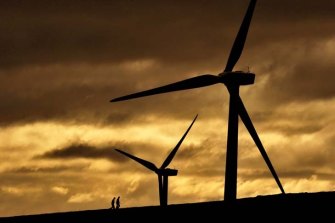
Billions of dollars of business opportunities would be opened up if the Australian government aligned the economy with the agreed Paris climate goals, the Investor Group on Climate Change says. CREDIT:JASON SOUTH
Under an orderly transition where policies are clear and consistent, openings in the next five years alone would total $15 billion in manufacturing and $6 billion in transport investment. So-called green hydrogen that taps renewable energy to split hydrogen from water would also lure $3 billion as that industry begins.
By 2050, renewables and other clean power generation would create the largest investment opportunity at $385 billion from 2020 onwards, with green hydrogen next largest at $350 billion in current dollars.
Other significant investment opportunities by mid-century include transport infrastructure at $104 billion, carbon sequestration worth $102 billion, and electricity transmission and distribution at $98 billion, the analysis by consultants Energetics estimates.
Sourcing those funds would generate a boom for finance too, with equity raisings of $525 billion and private debt finance at $322 billion. Corporate and government bond sales would reach $216 billion more.
Emma Herd, IGCC's chief executive, said the analysis was if anything conservative because it excluded the export opportunities if Australia mastered green hydrogen and green steel, which avoids fossil fuels.
“If we get this right, Australia could reap the benefits of $63 billion in fresh private investment over the next five years, and over $1 trillion by mid-century, in domestic opportunities alone," Ms Herd said.
“Many of these prospects are in regional Australia with multibillion-dollar opportunities in carbon farming, renewable energy, transport infrastructure and advanced manufacturing," she said, adding that given the likely post-COVID-19 constraints governments would need markets to do the bulk of the work.
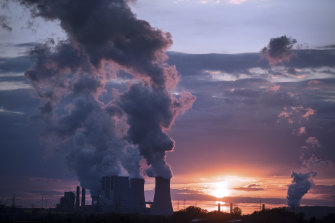
Existing coal and other fossil fuels will create huge market opportunities that other nations will grab if Australia doesn't, a new report finds. CREDIT: DP
In Australia's case, an orderly transition to a net 2050 goal implies increasing our target to cutting 2005-level emissions 45 per cent by 2030, compared with the actual pledge of 26-28 per cent.
RELATED ARTICLE

FEDERAL BUDGET
'Thrilled': Next generation climate modelling gets budget kickstart
The alternative "hothouse scenario" is for emissions to drop in line with existing international promises, a path "leading severe climate change impacts on economies", which the report doesn't quantify.
Still, a business-as-usual approach will see lost investment opportunities reach $43 billion by 2025 alone, relative to the net-zero alternative. By 2050, these rise to about $265 billion, with renewables topping the list at $65 billion, ahead of $63 billion for green hydrogen production.
The absence of a clear market signal has been one of a number of risks facing investors everywhere, the report said.
"These investment risks are more acute in Australia due to a history of ad hoc policy interventions, a piecemeal approach to energy and the lack of a bipartisan, long-term approach to climate policy," it said.
The report also raised doubts about the long-term viability of gas, a key part of the Morrison government's post-coronavirus recovery plan.
"[G]lobal capital markets will increasingly scrutinise the climate risks associated with gas, leading to preferential investment in true zero-emissions alternatives."
"This is borne out in the Energetics modelling, which shows no large-scale investment in gas power generation or infrastructure under either [net zero or hothouse] scenario as renewable energy and storage are cheaper alternatives," it said.
By Peter Hannam October 14, 2020 —
Global greenhouse gas emissions have dived at a faster rate than any time since records began as the coronavirus crushes demand for travel and other energy uses, a team of international researchers has found.
In the first six months of 2020, emissions fell 1.551 billion tonnes – or roughly the equivalent of three times Australia's annual carbon release, according to scientists, based in nations from China to the US and Germany, who published their results in Nature Communications journal on Thursday.

Aircraft emissions have dived as aeroplanes have been grounded all over the world. Pictured here are planes at a storage facility in Alice Springs.CREDIT:GETTY IMAGES
The drop of 8.8 per cent, compared with a year earlier, was steeper than during the global financial crisis that began in 2008, the Great Depression of the 1930s, the 1979 oil crisis and even world wars.
The largest monthly decline in the period came in April as the global pandemic's first wave swept through the largest European and US economies and prior to China's subsequent rebound in post COVID-19 activity.
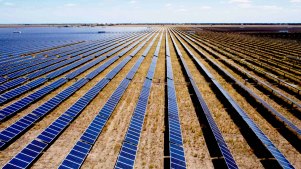
Daily emissions – extrapolated from data such as electricity generation in 31 countries, vehicle traffic in more than 400 cities, and industrial output in 62 nations – were down 16.9 per cent versus April 2019, the researchers said.
Among the main sectors, transport recorded the biggest slump in emissions as lockdowns restricted the movement of people, sliding 40 per cent. Within that group, aviation emissions plunged almost 44 per cent, a rate that has accelerated slightly into July.
The estimates came a day after the International Energy Agency predicted full-year emissions for 2020 would be about 7 per cent lower than in 2019. The decline in fossil-fuel use has also been compounded by the relentless fall in renewable energy prices, particularly solar.
During the first half of the year, emissions in the US were down 13.3 per cent, the European Union and the United Kingdom fell 12.7 per cent.
Those in India were down 15.4 per cent while those in China – where the coronavirus first emerged – only dropped 3.7 per cent as that nation's economy rebounded.
The researchers cautioned that the reduction would likely be temporary and only tiny compared with long-run increase in atmospheric concentrations of the carbon dioxide and other gases.
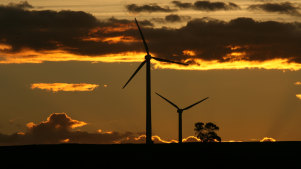
"While the CO2 drop is unprecedented, decreases of human activities cannot be the answer," said Hans Joachim Schellnhuber, founding director of the Potsdam Institute for Climate Impact Research, and one of the report's author.
“Instead we need structural and transformational changes in our energy production and consumption systems," Professor Schellnhuber said.
"Individual behaviour is certainly important, but what we really need to focus on is reducing the carbon intensity of our global economy.”
Data gathered by Ndevr Environmental, a consultancy, estimated Australia's emissions from petrol in the January-June period sank 15 per cent to 13.1 million tonnes of carbon-dioxide equivalent and those of aviation by 44 per cent to 4.7 million tonnes.
"What is really concerning in the report is the strong rebound effect due to a lack of structural change," Richie Merzian, Climate & Energy Program Director at The Australia Institute, said.
"That is especially the case in Australia given there isn’t a single, not even one, national policy to cut transport pollution."
Pep Canadell, executive director of the Global Carbon Project, said dust, smoke and other environmental issues were being tracked and reported on using satellites and other technology, but not greenhouse gases until lately.
"Having a more real time system provides stronger and immediate feedback to society and governments on the evolution of our carbon emissions and the sectors contributing the most or being affected the most by intentional namely, climate mitigation) or unintentional (such as the COVID-19 pandemic) changes in the energy system," Dr Canadell said.
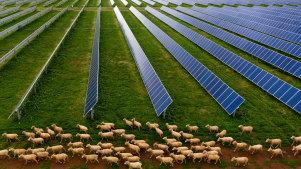
By Nick O'Malley
July 30, 2020 —
A plan to build the world's largest solar farm and battery in the Northern Territory and connect it to supply power to Singapore and Indonesia has been granted "major project status" by the federal government.
Energy and Emissions Minister Angus Taylor said the $22 billion project, known as the Australia-ASEAN Power Link and backed by Atlassian's Mike Cannon-Brookes and Fortescue Metals founder Andrew Forrest, would help Australia maintain its position as a leading energy exporter.
"As technologies change, we can capitalise on our strengths in renewables to continue to lead the world in energy exports," he said.
The project, if completed, would provide Singapore with up to 20 per cent of its power supply by 2027, and dispatch power to the Northern Territory and Indonesia, earning $2 billion per year.
"The battery will be 150 times the size of [the South Australian big battery at] Hornsdale, so it's insanely large," Mr Cannon-Brookes told the National Smart Energy Summit in Sydney in December.
"The longest subsea cable at the moment is 1900 kilometres, there are a couple of others under construction, but at three and a half thousand clicks it is getting to the limit. I suspect it will still be the longest by the time it's built."
But he said the scale of the project was manageable.
"There's nothing engineering wise in the individual component parts that says it can't be built," he said.
The recognition of the project by the federal government as being of national significance this week will see it win help securing state and federal approvals.
Industry, Science and Technology Minister Karen Andrews said the project would create 1500 jobs during construction and 350 ongoing jobs.
"It's a strong statement to all Australians that despite the immediate challenges of the COVID-19 pandemic we will come out the other side stronger and industry is still investing in opportunities that will drive our economic recovery," she said.
In June Mr Cannon-Brookes backed an economic stimulus plan developed by the climate change think tank Beyond Zero Emissions that would accelerate new energy transmission and storage projects and a national housing retrofit program designed to eliminate energy bills for low-income households.
"We can build a renewable energy superpower with a very low cost of energy generation," he said at the launch of the strategy, one of several green stimulus packages made public by industry groups and think tanks since the COVID-19 pandemic stalled the economy.
"We can use this as an opportunity to electrify so much of our economy, in lots of different ways. We can use it to build a better strategically positioned economy for the future," he said.
By Nick O'Malley October 13, 2020 —
Solar power has been declared "the new king of electricity" by the International Energy Agency in its annual energy outlook report, which finds it is already cheaper than power generated by new coal and gas developments in most countries and is providing, "some of the lowest-cost electricity ever seen".
For the first time since the industrial revolution, coal-fired power will constitute less than 20 per cent of the world's energy by 2040, according to one scenario in the report, which found the end of the coal era has been accelerated by the COVID-19 pandemic.
The report has major implications for the Australian government, with Tim Buckley of the Institute for Energy Economics and Financial Analysis saying it was hugely significant that the IEA was now predicting that coal was in structural decline in all of its modelled scenarios, as in previous years in some scenarios it predicted that coal demand would have continued growth at lower rates.
“It deprives Australian state and federal governments of a crutch. They have relied on the IEA modelling in the past to say there was evidence of continued growth, so has the industry,” he said.

Moree solar farm in NSW.
This year global greenhouse gas emissions will fall by 7 per cent to 33.4 gigatonnes according to the 2020 World Energy Outlook, but the agency warns that the economic slump cannot be viewed as a solution to climate change. Unless nations adopt green economic recovery policies emissions will quickly rise in the recovery, it says.
"The economic downturn has temporarily suppressed emissions, but low economic growth is not a low-emissions strategy – it is a strategy that would only serve to further impoverish the world’s most vulnerable populations,” said IEA chief Dr Fatih Birol.
Instead, governments should adopt policies to drive down emissions.
The report models four possible scenarios of recovery and energy use, ranging from one in which governments adopt policies to reach net-zero emissions by 2050 to one in which governments respond with their already stated policies. In this scenario greenhouse gas emissions bounce back to pre-COVID levels by 2023.
All the scenarios predict that coal’s peak use has already passed and cast renewables as taking "starring roles".
"I see solar becoming the new king of the world’s electricity markets. Based on today’s policy settings, it is on track to set new records for deployment every year after 2022," said Dr Birol. "If governments and investors step up their clean energy efforts in line with our sustainable development scenario, the growth of both solar and wind would be even more spectacular – and hugely encouraging for overcoming the world’s climate challenge."
The report predicts peak oil demand will hit in the coming decade, but unless governments shift policies that support its use it could plateau for years after that.
Gas demand is expected to rise in Asia over coming years under one scenario as governments use it to replace coal energy plants, but for the first time the agency is predicting that gas demand will begin to decline by 2040. Gas’s environmental credentials will be challenged by new technologies demonstrating that methane “fugitive emissions” associated with gas are causing significant harm to the climate, it says.

VIDEO https://tinyurl.com/y2yn9w4y

Pollution from coal-fired power stations in Victoria
0:15

Pollution from coal-fired power stations on the east coast
"An uncertain economic recovery also raises questions about the future prospects of the record amount of new liquefied natural gas export facilities approved in 2019," the report says. "Investors are looking with increased scepticism at oil and gas projects due to concerns about financial performance and the compatibility of company strategies with environmental goals."
Mr Buckley said the IEA’s acknowledgement of the climate impact methane emissions related to the gas industry have was also a signal of future uncertainty for the industry, though he said he did not believe it would prompt the government to reconsider its support for a gas-led recovery.
Director of the Grattan Institute’s energy program Tony Wood said it would be difficult for Australia to dismiss the IEA’s modelling because it is one of the agency's most long-standing and active members.
Kingsmill Bond, an energy analyst with Carbon Tracker, a finance and climate change think tank in London, welcomed the recognition that the world began to hit fossil fuel peaks in 2019, but said he believed it underplayed how far and fast solar costs would continue to fall.
"The IEA is forecasting a massive slow-down in the rate of fall of solar costs. Costs have been falling at 18 per cent a year since 2010," he said. "The [report] expects that the rate of cost falls reduces to just 2 per cent a year in the period to 2040. This is simply not credible."
Mr Bond also said he believed solar would continue to expand at a faster rate than that predicted by the agency's business-as-usual scenario.
.

Nick O'Malley is National Environment and Climate Editor for The Sydney Morning Herald and The Age. He is also a senior writer and a former US correspondent.
By Julia Triezenberg For The Astorian

This drawing is a 1734 sketch of a sea serpent by Hans Egede.
Columbia River Maritime Museum

This shadowbox is just one example of the ways that sea monsters are a part of maritime imagination.
Columbia River Maritime Museum
Legends emerge in a variety of ways. While they often tell the origin stories of a particular group or place, it can be hard to pinpoint their birthplaces. There is rarely any physical evidence to prove that a legend is true. But they continue to be passed down from generation to generation, becoming a defining feature in communities.
The Pacific Northwest is no stranger to tales of mysterious creatures. Sea monsters, like the legends that talk about them, come in all shapes and sizes. They’ve become a mainstay in maritime cultures around the world. Sailors would tell these tales to give some explanation to tragedy at sea, to make their lives sound more adventurous to landlubbers or to make sure they weren’t left out of the buzz of a sea monster story. Even though there is advanced technology to explore ocean depths, researchers don’t know about everything that may be down there.
The North Coast has several tales of sea monsters frequenting local waters.
The sea serpent “Claude” was first sighted near the mouth of the Columbia River in 1934. L.A. Larson, a mate on the lightship Columbia LV-88, is believed to be the first human to have spotted Claude. Larson described Claude as, “About 40 feet long. It had a neck some 8 feet long, a big round body, a mean-looking tail and an evil, snaky look to its head.”
Other members of the Columbia’s crew confirmed Larson’s sighting, as did the captain and crew of the U.S. Lighthouse Service tender Rose.
Descriptions of “Colossal Claude” or the “Columbia River Sea Serpent” differ from person to person. While Larson said that the monster had an evil, snaky look to it, Capt. Chris Anderson of the schooner Argo reported several years later that, “His head was like a camel’s … He had glassy eyes and a bent snout he used to push a 20-pound halibut off our lines and into his mouth.”
The ship’s crews claim to have seen him for the next 20 years. Fishermen on the river reported sightings every so often. Claude hasn’t been seen around the Columbia River for about 70 years — since fishermen were telling their stories in the 1950s.
The North Coast’s second legendary celebrity is “Marvin,” who was originally spotted in 1963. In a videotape that has since been studied by some of the country’s leading marine biologists, divers from Shell Oil Co. captured footage of a massive creature moving past them.
Marvin reportedly is about 15 feet long, has barnacled bumps covering his body and swam in a spiral motion past the divers. Many scientists have examined the footage and debated how to explain Marvin’s appearance.
Some believe he is some type of jellyfish. Others are convinced that the sea monster is a remnant of prehistoric times and has only just decided to reveal itself to researchers in the last 60 years. There are also people who believe that Colossal Claude and Marvin are the same monster.
Although sightings of them have been scarce over the past few years, Marvin and Claude are still testaments to the mysticism that comes with living on the North Coast. Who knows when they may pop up again.
Julia Triezenberg is an educator at the Columbia River Maritime Museum.
The role of planning in the ecosocialist transition – a contribution to the debate
Saturday 25 April 2020, by Michael Löwy
The semiannual French review Les Possibles, a publication of Attac France, in its most recent issue (No 23) features a number of articles on planning for the ecological and social transition. Most are addressed to the issue of socialist planning vs. capitalist markets that was prominent in the debates of 20th century socialism. The contribution by Michael Löwy puts this debate in the ecosocialist framework that has emerged in this century. My translation of it is published below.
– Richard Fidler
Ecological and social planning and transition
The need for economic planning in any serious and radical process of socio-ecological transition is winning greater acceptance, in contrast to the traditional positions of the Green parties, favorable to an ecological variant of “market economy,” that is, “green capitalism.”
In her latest book, Naomi Klein observes that any serious reaction to the climate threat “involves recovering an art that has been relentlessly vilified during these decades of market fundamentalism: planning.” This includes, in her view, industrial planning, land use planning, agricultural planning, employment planning for workers whose occupations are made obsolescent by the transition, etc. “This means bringing back the idea of planning our economies based on collective priorities rather than profitability….” [1]
Democratic planning
The socio-ecological transition — towards an ecosocialist alternative — implies public control of the principal means of production and democratic planning. Decisions concerning investment and technological change must be taken away from the banks and capitalist businesses, if we want them to serve the common good of society and respect for the environment.
Who should make these decisions? Socialists often responded: “the workers.” In Volume III of Capital, Marx defines socialism as a society of “the associated producers rationally regulating their interchange (Stoffwechsel) with Nature.” However, in Volume I of Capital, we find a broader approach: socialism is conceived as “an association of free men, working with the means of production (gemeinschaftlichen) held in common.” This is a much more appropriate concept: production and consumption must be organized rationally not only by the “producers” but also by consumers and, in fact, the whole of society, the productive or “unproductive” population: students, youth, women (and men) homemakers, retired persons, etc.
In this sense, society as a whole will be free to democratically choose the productive lines to be promoted and the level of resources that should be invested in education, health or culture. The prices of goods themselves would no longer respond to the law of supply and demand, but would be determined as much as possible according to social, political and ecological criteria.
Far from being “despotic” in itself, democratic planning is the exercise of the free decision-making of the whole of society — a necessary exercise to free ourselves from the alienating and reified “economic laws” and “iron cages” within capitalist and bureaucratic structures. Democratic planning associated with a reduction of working time would be a considerable step forward by humanity towards what Marx called “the realm of freedom”: the increase in free time is in fact a condition for the participation of workers in democratic discussion and management of the economy and society.
Advocates of the free market tirelessly use the failure of Soviet planning to justify their categorical opposition to any form of organized economy. We know, without getting into a discussion on the successes and failures of the Soviet experience, that it was obviously a form of “dictatorship over needs,” to quote the expression used by György Markus and his colleagues from the Budapest School: an undemocratic and authoritarian system which gave a monopoly over decisions to a small oligarchy of techno-bureaucrats. It was not planning that led to the dictatorship. It was the growing limitation of democracy within the Soviet state and the establishment of totalitarian bureaucratic power after Lenin’s death that gave rise to an increasingly authoritarian and undemocratic planning system. If socialism is to be defined as control of production processes by workers and the general population, the Soviet Union under Stalin and his successors fell far short of this definition.
The failure of the USSR illustrates the limits and contradictions of bureaucratic planning with its flagrant ineffectiveness and arbitrariness: it cannot serve as an argument against the application of genuinely democratic planning. The socialist conception of planning is nothing other than the radical democratization of the economy: if political decisions should not be made by a small elite of leaders, why not apply the same principle to economic decisions? The question of the balance between market and planning mechanisms is undoubtedly a complex issue: during the first phases of the new society, markets will certainly still occupy a significant place, but as the transition to socialism progresses, planning will become increasingly important.
In the capitalist system use value is only a means — and often a device — subordinated to exchange value and profitability (this in fact explains why there are so many products in our society without any utility). In a planned socialist economy, the production of goods and services responds only to the criterion of use value, which entails spectacular economic, social and ecological consequences.
Of course, democratic planning concerns the major economic choices and not the administration of local restaurants, grocery stores, bakeries, small shops, craft businesses or services. Likewise, it is important to emphasize that planning does not contradict the self-management of workers in their production units. Whereas the decision to convert, for example, an automobile factory to bus or rail vehicle production would be up to society as a whole; the internal organization and operation of the factory would be managed democratically by the workers themselves. There has been much debate over the “centralized” or “decentralized” nature of planning, but the important thing remains democratic control of the plan at all levels — local, regional, national, continental and, hopefully, global — since ecological issues such as climate warming are global and can only be addressed at that level. This proposal could be called “comprehensive democratic planning.” Even at this level, it is planning which contrasts with what is often described as “central planning” because economic and social decisions are not taken by any “center” but democratically determined by the populations concerned.
There would, of course, be tensions and contradictions between self-governing institutions and local democratic administrations and other larger social groups. Negotiating mechanisms can help resolve many such conflicts, but in the final analysis, it will be up to the larger groups involved, and only if they are in the majority, to exercise their right to impose their opinions. To give an example: a self-managed factory decides to dump its toxic waste in a river. The population of an entire region is threatened by this pollution. It may then, following a democratic debate, decide that the production of this unit must be stopped until a satisfactory solution to control its waste is found. Ideally, in an ecosocialist society, the factory workers themselves will have sufficient ecological awareness to avoid making decisions that are dangerous for the environment and the health of the local population. However, the fact of introducing methods to guarantee the decision-making power of the population to defend the most general interests, as in the previous example, does not mean that questions concerning internal management should not be submitted to the citizens at the level of the factory, school, neighborhood, hospital or village.
Ecosocialist planning must be based on a democratic and pluralist debate, at each level of decision. Organized in the form of parties, platforms or any other political movement, the delegates of the planning bodies are elected and the various proposals are presented to everyone they concern. In other words, representative democracy must be enriched — and improved — by direct democracy which allows people to choose directly — locally, nationally and, ultimately, internationally — between different proposals. The whole population would then make decisions on free public transit, on a special tax paid by car owners to subsidize public transport, on the subsidization of solar energy to make it competitive with fossil energy, on the reduction of the hours of work to 30, 25 hours a week or less, even if this entails a reduction in production.
The democratic nature of planning does not make it incompatible with the participation of experts whose role is not to decide, but to present their arguments — often different, even opposed — during the democratic decision-making process. As Ernest Mandel said:
“Governments, parties, planning boards, scientists, technocrats or whoever can make suggestions, put forward proposals, try to influence people. To prevent them from doing so would be to restrict political freedom. But under a multi-party system, such proposals will never be unanimous: people will have the choice between coherent alternatives. And the right and power to decide should be in the hands of the majority of producers / consumers / citizens, not of anybody else. What is paternalist or despotic about that?” [2]
A question arises: what guarantee do we have that people will make the right choices, those that protect the environment, even if the price to pay is to change part of their consumption habits? There is no such “guarantee,” only the reasonable prospect that the rationality of democratic decisions will triumph once the fetishism of consumer goods has been abolished. People will of course make mistakes by making bad choices, but don’t the experts make mistakes themselves? It is impossible to imagine the construction of a new society without the majority of the people having reached a great socialist and ecological awareness thanks to their struggles, their self-education and their social experience. So, it is reasonable to believe that serious errors — including decisions inconsistent with environmental needs — will be corrected. In any case, one wonders if the alternatives — the ruthless market, an ecological dictatorship of “experts” — are not much more dangerous than the democratic process, with all its limits.
Admittedly, for planning to work, there must be executive and technical bodies capable of implementing decisions, but their authority would be limited by the permanent and democratic control exercised by the lower levels, where workers’ self-management takes place in the process of democratic administration. It cannot be expected, of course, that the majority of the population will spend all of their free time in self-management or participatory meetings. As Ernest Mandel remarked: “Self-administration does not entail the disappearance of delegation. It combines decision-making by the citizens with stricter control of delegates by their respective electorate.” [3]
A long process not free from contradictions
The transition from the “destructive progress” of the capitalist system to ecosocialism is a historic process, a revolutionary and constant transformation of society, culture and mentalities — and politics in the broad sense, as defined above, is undeniably at the heart of this process. It is important to specify that such an evolution cannot be initiated without a revolutionary change in the social and political structures and without the active support to the ecosocialist program by a large majority of the population. Socialist and ecological awareness is a process whose decisive factors are the collective experience and struggles of the population, which, starting from partial confrontations at the local level, progress towards the prospect of a radical change in society. This transition would lead not only to a new mode of production and a democratic and egalitarian society but also to an alternative way of life, a truly ecosocialist civilization beyond the imperium of money with its consumption patterns artificially induced by advertising and its limitless production of useless and/or environmentally harmful goods.
Some environmentalists believe that the only alternative to productivism is to stop growth as a whole, or to replace it with negative growth — called in France “degrowth.” To do this, it is necessary to drastically reduce the excessive level of consumption of the population and to give up individual houses, central heating and washing machines, among other things, in order to reduce energy consumption by half. As these and other similarly draconian austerity measures may be very unpopular, some advocates of degrowth play with the idea of a kind of “ecological dictatorship.” [4] Against such pessimistic points of view, some socialists display an optimism which leads them to think that technical progress and the use of renewable energy sources will allow unlimited growth and prosperity so that everyone receives “according to their needs.”
It seems to me that these two schools share a purely quantitative conception of “growth” — positive or negative — and of the development of the productive forces. I think there is a third posture that seems more appropriate to me: a real qualitative transformation of development. This implies putting an end to the monstrous waste of resources caused by capitalism, which is based on the large-scale production of useless and/or harmful products. The arms industry is a good example, as are all these “products” manufactured in the capitalist system — with their planned obsolescence — which have no other purpose than to create profits for big companies.
The question is not “excessive consumption” in the abstract, but rather the dominant type of consumption whose main characteristics are: ostensible property, massive waste, obsessive accumulation of goods and the compulsive acquisition of pseudo-novelties imposed by “fashion.” A new society would orient production towards meeting authentic needs, starting with what could be described as “biblical” — water, food, clothing and housing — but including essential services: health, education, culture and transportation.
It is obvious that the countries where these needs are far from being met, that is to say the countries of the southern hemisphere, will have to “develop” much more — build railways, hospitals, sewers and other infrastructures — than industrialized countries, but this should be compatible with a production system based on renewable energy and therefore not harmful to the environment. These countries will need to produce large quantities of food for their populations already hit by famine, but — as the farmers’ movements organized at an international level by the Via Campesina network have argued for years — this is an objective much easier to reach through organic peasant farming organized by family units, cooperatives or collective farms, than by the destructive and antisocial methods of industrial agrobusiness with its intensive use of pesticides, chemical substances and GMOs.
The present system of odious debt and imperialist exploitation of the resources of the South by the capitalist and industrialized countries would give way to a surge of technical and economic support from the North to the South. There would be no need — as some Puritan and ascetic ecologists seem to believe — to reduce, in absolute terms, the standard of living of the European or North American populations. These populations should simply get rid of useless products, those which do not meet any real need and whose obsessive consumption is upheld by the capitalist system. While reducing their consumption, they would redefine the concept of standard of living to make way for a lifestyle that is actually richer.
How to distinguish authentic needs from artificial, false or simulated needs? The advertising industry — which exerts its influence on needs through mental manipulation — has penetrated into all spheres of human life in modern capitalist societies. Everything is shaped according to its rules, not only food and clothing, but also areas as diverse as sport, culture, religion and politics. Advertising has invaded our streets, our mailboxes, our television screens, our newspapers and our landscapes in an insidious, permanent and aggressive manner. This sector contributes directly to conspicuous and compulsive consumption habits. In addition, it leads to a phenomenal waste of oil, electricity, labour time, paper and chemical substances, among other raw materials — all paid for by consumers. It is a branch of “production” which is not only useless from the human point of view, but which is also at odds with real social needs. While advertising is an indispensable dimension in a capitalist market economy, it would have no place in a society in transition to socialism. It would be replaced by information on the products and services provided by consumer associations. The criterion for distinguishing an authentic need from an artificial need would be its permanence after the removal of advertising. It is clear that for some time the past habits of consumption will persist because no one has the right to tell people what they need. The change in consumption models is an historical process and an educational challenge.
Certain products, such as the private car, raise more complex problems. Passenger cars are a public nuisance. Globally, they kill or maim hundreds of thousands of people each year. They pollute the air in big cities — with harmful consequences for the health of children and the elderly — and they contribute considerably to climate change. However, the car satisfies real needs under the current conditions of capitalism. In European cities where the authorities are concerned about the environment, some local experiments — approved by the majority of the population — show that it is possible to gradually limit the place of the private car in favour of buses and trams. In a process of transition to ecosocialism, public transit would be widespread and free — on land as well as underground — while paths would be protected for pedestrians and cyclists. Consequently, the private car would play a much less important role than in bourgeois society where the car has become a fetish product promoted by insistent and aggressive advertising. The car is a symbol of prestige, a sign of identity (in the United States, the driver’s license is the recognized identity card). It is at the heart of personal, social and erotic life. In this transition to a new society, it will be much easier to drastically reduce over-the-road transportation of commodities — a source of tragic accidents and excessive pollution — and to replace it with rail or container transport. Only the absurd logic of capitalist “competitiveness” explains the present development of truck transportation.
To these proposals, the pessimists will answer: yes, but individuals are motivated by infinite aspirations and desires which must be controlled, analyzed, suppressed and even repressed if necessary. Democracy could then be subject to certain restrictions. Yet ecosocialism is based on a reasonable assumption, previously advanced by Marx: the predominance of “being” over “having” in a non-capitalist society, that is to say the primacy of free time over the desire to own countless objects: personal achievement through real activities, cultural, sports, recreational, scientific, erotic, artistic and political.
The fetishism of the commodity encourages compulsive buying through the ideology and advertising specific to the capitalist system. There is no evidence that this is part of “eternal human nature.” Ernest Mandel pointed out:
“The continual accumulation of more and more goods (with declining ‘marginal utility’) is by no means a universal or even predominant feature of human behaviour. The development of talents and inclinations for their own sake; the protection of health and life; care for children; the development of rich social relations as a prerequisite of mental stability and happiness — all these become major motivations once basic material needs have been satisfied.” [5]
As we mentioned above, this does not mean, especially during the transition period, that conflicts will be non-existent: between environmental protection needs and social needs, between ecological obligations and the need to develop basic infrastructures, especially in poor countries, between popular consumption habits and lack of resources. A society without social classes is not a society without contradictions or conflicts. These are inevitable: it will be the role of democratic planning, from an ecosocialist perspective freed from the constraints of capital and profit, to resolve them through open and pluralistic discussions leading society itself to take decisions. Such a democracy, common and participative, is the only way, not to avoid making errors, but to correct them through the social collectivity itself.
To dream of a green socialism or even, in the words of some, of a solar communism, and to fight for this dream, does not mean that we are not trying to implement concrete and urgent reforms. While we should not have illusions about “clean capitalism,” we must nevertheless try to gain time and impose on the public authorities some elementary changes: a general moratorium on genetically modified organisms, a drastic reduction in greenhouse gas emissions, strict regulation of industrial fishing and the use of pesticides as chemical substances in agro-industrial production, a much greater development of public transit, the gradual replacement of trucks by trains.
These urgent eco-social demands can lead to a process of radicalization, provided that they are not adapted to the requirements of “competitiveness.” According to the logic of what Marxists call a “transitional program,” each small victory, each partial advance immediately leads to a greater demand, to a more radical objective. These struggles around concrete questions are important, not only because partial victories are useful in themselves, but also because they contribute to ecological and socialist awareness. Moreover, these victories promote activity and self-organization from below: these are two necessary and decisive pre-conditions for achieving a radical, that is to say revolutionary, transformation of the world.
There will be no radical transformation as long as the forces engaged in a radical, socialist and ecological program are not hegemonic, in the sense understood by Antonio Gramsci. In a sense, time is our ally, because we are working for the only change capable of solving environmental problems, which are only getting worse with threats — such as climate change — which are more and more close. On the other hand, time is running out, and in a few years — no one can say how much — the damage could be irreversible. There is no reason for optimism: the power of the current elites at the head of the system is immense, and the forces of radical opposition are still modest. However, they are the only hope we have to put a brake on the “destructive progress” of capitalism.
3 April 2020
Republished with permission from Life on the Left.
P.S.
If you like this article or have found it useful, please consider donating towards the work of International Viewpoint. Simply follow this link: Donate then enter an amount of your choice. One-off donations are very welcome. But regular donations by standing order are also vital to our continuing functioning. See the last paragraph of this article for our bank account details and take out a standing order. Thanks.
Attached documents
the-role-of-planning-in-the-ecosocialist-transition-a_a6548.pdf (PDF - 136.5 kb)
Extraction PDF [->article6548]
Footnotes
[1] Naomi Klein, On Fire: The Burning Case for a Green New Deal (Random House, 2019), pp. 95, 98.
[2] Ernest Mandel, Power and Money (Verso, London, 1992), p. 209.
[3] Mandel, ibid., p. 204.
[4] The German philosopher Hans Jonas Le principe responsabilité, Éd. du Cerf, 1979) raised the possibility of a “benevolent tyranny” to save nature, and the Finnish ecofascist Pentti Linkola Voisiko elämä voittaa Helsinki, Tammi, 2004) advocated a dictatorship capable of preventing any economic growth.
[5] Mandel, ibid., p. 206.
Economy
Intersecting crises and the impact in Britain
The crisis triggered by the pandemic and the economic policy of the European Union
When Chinese eat grass: the economic crisis amid the coronavirus pandemic
Impact of European policies on the Global South and possible alternatives
The International Aid the Lebanese People Urgently Need Must Not Be Used to Enforce Neoliberal Measures
Ecosocialism
Ernest Mandel and ecosocialism
Covid-19 changes everything
“Only an anti-systemic revolution, breaking with the iron laws of capitalism can open the way for a new society”
Thirteen theses on the imminent ecological catastrophe and the (revolutionary) means of averting it
Was Marx an ecosocialist? A reply to Kohei Saito.
Michael Löwy activist of the Fourth International, is an ecosocialist, sociologist and philosopher. Born in 1938 in São Paulo (Brazil), he has lived in Paris since 1969. Research director (emeritus) at the CNRS and professor at the École des hautes études en sciences sociales, he is the author of numerous books published in twenty-nine languages, including The Marxism of Che Guevara, Marxism and Liberation Theology, Fatherland or Mother Earth? and The War of Gods: Religion and Politics in Latin America.
He is joint author (with Joel Kovel) of the International Ecosocialist Manifesto. He was also one of the organizers of the first International Ecosocialist Meeting, in Paris, in 2007.


